Mids are rich and organic, where instruments have high levels of realism. Vocals, both male and female, sound smooth and emotional. They have decent warmth in them, to make them transport emotions with a certain je-ne-sais-quoi that really grabs me. The entire midrange has good body and weight. They are not too thin and not too thick and the note sizes are just excellent. Upper mids have good body and glowing energy in them. The texture of the midrange is very good. Mids are overall on the smoother side and they aren’t particularly grainy or edgy.
High notes extend well with nice shimmer and glare. Treble is airy and mostly soft. At times some cymbal crashes can sound a touch hard. I wouldn’t say the treble as a whole is harsh or aggressive though. It does deliver good levels of energy and speed. Highs are not veiled or sibilant to me.
In terms of technical performance the Anole VX does possess high quality. The resolution is very good, where I can pick out claps in a live-audience with good precision. Instruments are well separated with good air surrounding them. What I like in particular about the Anole VX is its sharp imaging. All musicians are placed with accuracy in the constructed stage and I am able to pin point each and every one of them.
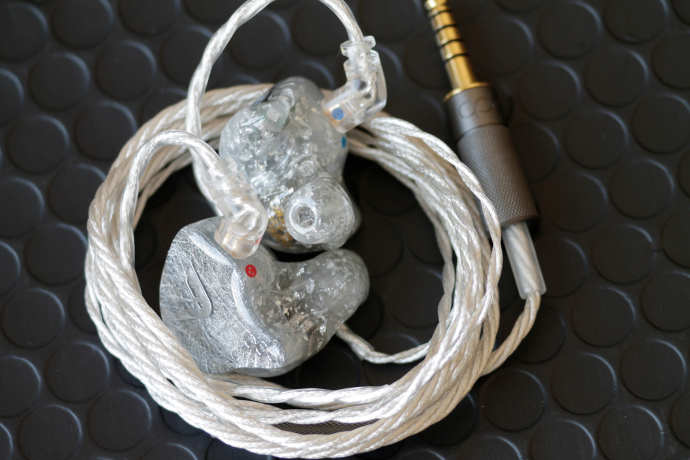
qdc Anole VX
The sound stage of the VX is superbly sized. It might not be the widest or deepest, but it still creates a holographic and three dimensional stage that does stretch out of your head. The stereo separation is exemplary in my opinion. The VX possesses very good speed and energy throughout. It manages to bring out minute details with good accuracy and layers the sound admirably.
Generalized, I would describe the sound signature of the Anole VX as wonderfully balanced and neutral, but with a hint of warmth. The VX is a monitor that’s not overly critical of recordings. It can make worse tracks and albums sound good. Of course the better the files are mastered, the better they sound with the Anole VX. A number of albums in my collection are from personal friends, and I know by heart how they should sound. The Anole VX manages to reproduce them with a sense of realism that convinces me.
Switches
1/bass – Enabling the bass-switch gives you an elevated mid and upper bass, it does reach more into the lower mids. This switch makes the lower segment sound more forward and fuller, but it pushes the treble back a touch too. For my personal taste this was too much bass, so I have left it in the downwards position pretty much at all times.
2/mids – The mid-switch adds a few Decibels to the mid- and upper midrange. Male and especially female vocals sound more forward positioned. Musicians appear more in the front now and the sound is a touch more holographic. If you like to power-up your vocals, this is the switch for you to flick.
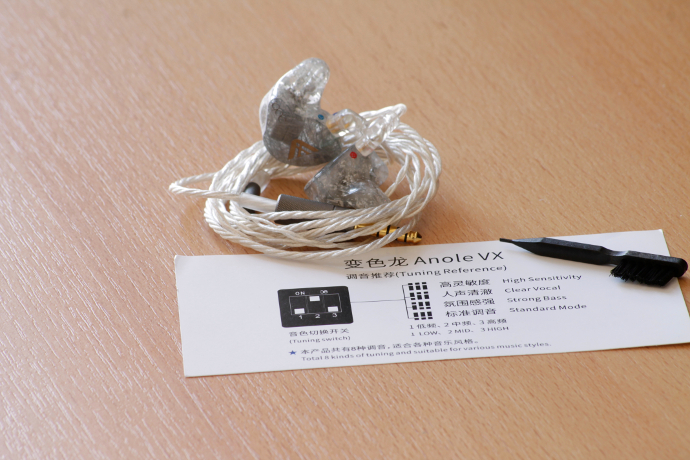
qdc Anole VX
3/treble – Flipping the treble-switch up gives you more upper-treble energy and prominence. Hi-Hat hits and cymbal crashes sound sharper, faster and harsher. Where they were on the edge before, they definitely are pushed over it for my taste with this switch up. There is also more air perceived in the sound with this switch up.
I am a fan of the standard tuning of my Anole VX, so I have kept the switches down at almost all times.
Aftermarket Cables:
Cables are a nice tool to squeeze the last drops out of an IEM or headphone. They’re not here to transform your toys into different sounding beasts though. That’s not their purpose. Some people swear by the benefits of cables, while others deny their audible characteristics.
Personally, I count myself to the people that hear sound changes with different cables. However, it also depends on the monitor for me. There are IEMs that pick up changes easier, like the Noble Katana, and others that see only mild effects of cable rolling. The Anole VX to me is a monitor that does benefit from a higher end cable. It doesn’t portray them as obvious as the Katana, but there are still sound variations that I could detect with my set of ears.
As mentioned before, working with aftermarket cables is not an easy task. A few cables in my repertoire I could easily flip upside-down.
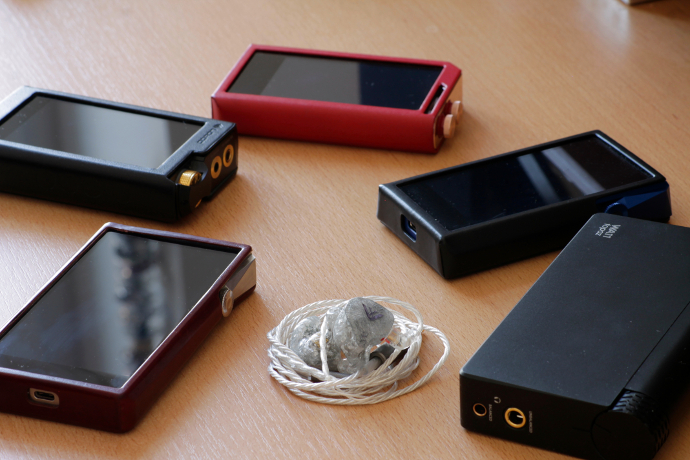
qdc Anole VX
PW Audio – 1960s (2w)
The PW Audio all-Copper cable brings in higher resolution and a blacker background to the Anole VX. You get improved layering and imaging. Lower mids and below frequencies are a tad more forward, giving the VX a warmer presentation. Lower mids are a touch thicker. The midrange appears a little smoother and more organic. Details are presented with higher clarity. The sound stage also did see some alterations in terms of width and depth.
PlusSound – Tri-Silver
With the tri-silver you get a tighter bound low end, with slightly harder punch. Mids are smooth with stepped up texture and resolution. Treble shimmers a bit more and is crisper than with stock. You’ll also get a slightly wider stage, better layering and imaging. Instruments stand out more in a spotlight and are sharper separated.
Linum – SuperBax
The SuperBax is one of my favourite cables because of its superior comfort. I can wear it and not notice it at all, even when wearing sunglasses. The Linum does not alter any frequency but rather improves the technical abilities of the Anole VX. There is slightly higher resolution, improved layering and better imaging with the SuperBax, but that’s all. No extra warmth, no brighter treble.
From the above three I had the Linum SuperBax attached at most times.
On the last page you’ll find out about Comparisons, Sources and the Conclusion.





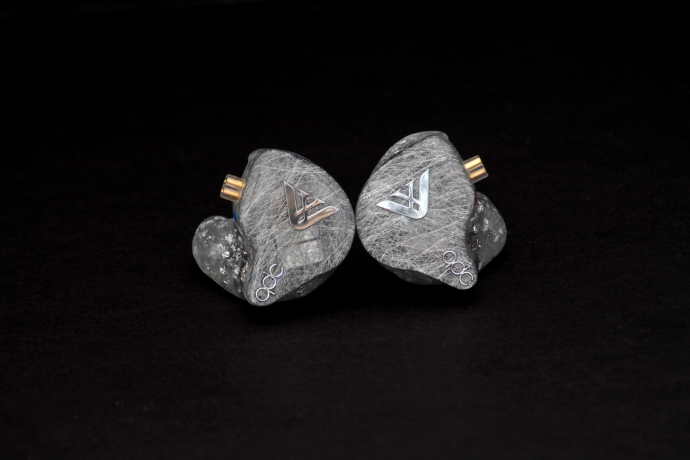
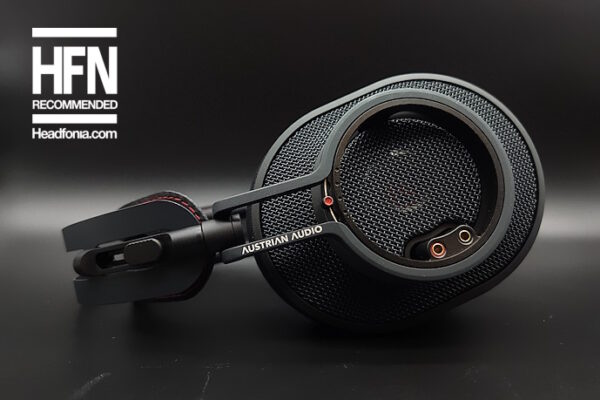

Frankie D
Like you please compare the QDC Anole VX to the Vision Ears VE-8. I also have the VX and was wondering what the VE-8 is like in comparison. Thank you.
Linus
Hi Frankie,
can’t comment. I had the VE8 last year for demo, but I don’t have it in my inventory. I don’t do comparisons based on memory, those are not accurate in my opinion. Sorry.
Daniel Vigil
How do the qdc VX compare to their predecessor, qdc Gemini? I’ve heard their sound signature is very similar.
Linus
Hi Daniel,
thanks for your comment.
Can’t say really, as I haven’t heard the Gemini. There’s also no chance I can try it anywhere here, as qdc is not very well spread in Europe. No chance to audition it.
Sorry.
Mark C
Do you think Fiio FH7 or Anole VX will pair better with Chord mojo?
Luis
Mojo is no match for an Anole VX. Get an Hugo 2 or a FiiO M15.